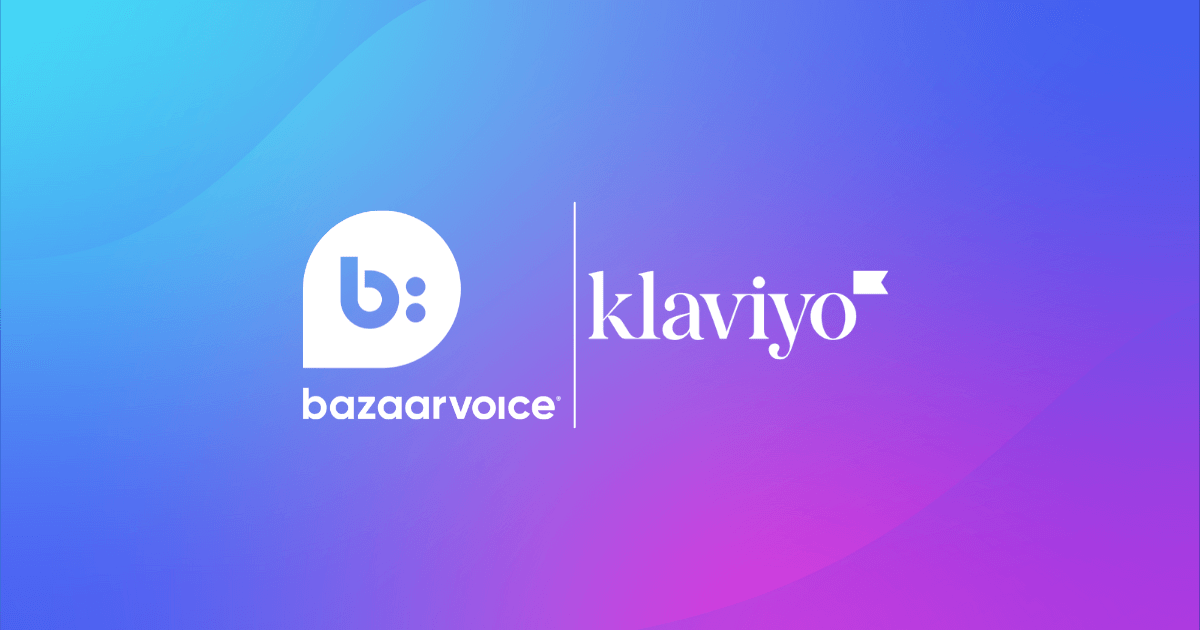February 14, 2024
Third-party data is on the way out. Relying on third-party cookies to drive your e-commerce sales is a thing of the past — and first-party data has stepped in to fill the void.
E-commerce and brand managers will soon have to rely on first-party data — the data you collect directly from customers yourself.
Not just to stay compliant with privacy regulations such as the GDPR and CCPA, but because a first-party data strategy can enhance your revenue, provide value internally for your business, give you better customer data, and ultimately help you build a relationship with your customers.
Chapters:
- What is first-party data?
- How to use first-party data
- How to collect first-party data
- First-party data e-commerce strategies
- Examples of first-party data strategy in action
- Maximize your first-party data
What is first-party data?
First-party data is customer information and data that you collect yourself — directly from your audience. Nobody else owns this data except you. It cannot legally be sold or shared, it doesn’t follow users outside of your website, and it’s made up of two different “types” of data.
1. Declarative data
Declarative data is the data that your audience self-reports, such as their name, email address, location, and more. It doesn’t just have to be rote demographic data, however. It can also be data such as their income level, the number of pets they have, and more. It’s especially useful for understanding consumer behavior and finding out what triggers buying behaviors.
Example: A customer informs you that they have pets: two cats. This information comes directly from the customer.
2. Behavioral data
Behavioral data is data based on the activities of a site visitor. This type of data is often collected via the use of a first-party cookie or tracking pixel. This cookie is unique to your site and your site only, and never follows the user across the web. Tools like Google Analytics are commonly used in conjunction with behavioral data to analyze site performance and user behavior, giving marketers and managers granular details about what parts of their website are performing and what parts need improvement.
Example: A customer likes several cat pictures and pages on Instagram but does not explicitly tell a business they have any cats. It’s up to the business to make that inference.
How to use first-party data
Before you start on your first-party data strategy, there’s some housekeeping and tactics that will need looking at first.
Align with stakeholders on what first-party data you’ll collect
First, you need to align with stakeholders on what first-party data you’ll collect. This way, you have buy-in from everyone on your team, and everyone’s needs are equally represented. Because this first-party data will become your only data source, it needs to be as robust as possible, while still keeping within regulations.
Aligning with stakeholders requires some prep on your end. Before meeting with the different stakeholders in your organization (managers, executives, legal, IT), come up with a list of metrics you’d like to track. Some common ones include sales interactions, emails, phone numbers, site behavior, purchase history, and common demographic information, such as age and location.
Next, you’re going to want to run this list of possible data points by your stakeholders, justifying why you want to collect each data type and how you’re going to do it, so there isn’t any friction between departments over what data is collected and how it’s being used.
Update to the latest Google Analytics data model
Google Analytics version 4 includes new ways to segment and track users, is GDPR and CCPA compliant, and is built to take on first-party data by utilizing AI to fill in data gaps that third-party data would ordinarily have filled.
The ever-popular analytics tool specifically addresses issues with the retirement of third-party data and inconsistencies in cookie consent options by using AI to fill in missing customer information, meaning you can still collect and analyze user data even if you don’t have a complete user profile.
Additionally, Google Analytics 4 helps you easily find and delete user data upon request, which means you can stay compliant with “the right to be forgotten.”
Looking to get started with a site implementation? Google has some valuable resources and a step-by-step guide to implementing Google Analytics 4 properties on your website’s analytics property.
Build new personas and segment your audiences based on first-party data
Because you’ll be using first-party data moving forward, you need your personas to be as accurate as possible; working with inaccurate or baseless buyer personas is a huge waste of time and resources. But you can’t keep relying on third-party data to build your buyer personas. Ask any marketer how accurate their third-party data is, and you’ll probably get back a “not very.” Survey data collected by Deloitte unearthed some startling facts about first-party data’s ugly cousin:
- Over 66% of respondents said that the third-party data about them was zero to 50% accurate as a whole
- Around 71% of all third-party data was deemed inaccurate after a review by survey respondents
As part of a first-party data strategy, personas based on first-party data are crucial to providing a personalized e-commerce marketing and advertising experience. Buyer personas based on first-party data have a number of benefits, including a 10–20% reduction in marketing and sales costs, a 20% higher customer satisfaction rate, a 10–15% increase in sales conversion rates, and a 20–30% increase in employee engagement.
Start by leveraging all the first-party data you can to build your personas. This might include data like location, age, purchase history, audience research, CRM data, or user account information, all of which can be consensually collected without the use of third-party data or cookies.
How you divide your customer base is entirely up to you. But some common shopper segmentations include:
- Shared characteristics and behaviors
- Common interests
- Demographics
- Region
- Purchase or browser history
- Frequent shoppers or buyers
- New customers
- Recent cart abandoners
- Browsing or buying habits
- Engagement levels
- Average AOV (e.g. big spenders, sales hunters, etc.)
Build a data governance strategy that keeps you compliant
Data governance is the process of ingesting data and managing that data’s lifecycle from creation to storage to deletion.
Both the GDPR and CCPA have clauses that allow users to request their data be deleted — “the right to be forgotten” and “right to erasure.” Data governance strategies play a huge role in both of these clauses — you can’t comply with a data deletion request if you can’t easily find and manage that data in the first place.
Failure to govern your first-party and third-party data in accordance with regulations could put you in regulatory hot water. The GDPR imposes stiff fines for companies who fail to comply. Amazon was hit with a massive $887 million fine for not complying with the GDPR.
Failure to govern your first-party and third-party data in accordance with regulations could put you in regulatory hot water.
Building a data governance strategy requires you to consult with two teams: legal and IT. Legal will be able to tell you what needs to happen to the data you have from a governance standpoint. IT will be able to help you find a solution to managing your data.
Start collecting first-party cookies in place of third-party cookies
You may have seen those popups on some websites asking to place cookies on your browsers while also offering you the chance to opt in or out of data collection. That’s how first-party cookies are placed in a way that’s compliant with regulations — and it’s a crucial aspect of your first-party data strategy. There’s a few key ideas at work here:
- Customer information gathered from first-party cookies is gathered consensually
- This data is being used on this site and only on this site and will not follow the user across the web
Ordinarily, companies use third-party cookies — cookies that have been placed on users’ browsers by third-party sites — to gather customer data. These cookies are placed without the consent of the user, directly violating the GDPR and CCPA, which prohibit the non-consensual placement of third-party cookies. How do you start collecting first-party cookies?
You can do this manually by consulting the different teams in your org about how you’re going to implement a first-party cookie strategy. Design the language and copy, then take your plan to legal, and finally to IT, who can implement a first-party cookie solution.
If you’re a small or medium-sized business, services like Cookiebot can help you set up collection popups. Larger organizations can rely on tools like OneTrust to do this at scale.
Value exchange
Value exchange is a tactic used to entice customers into exchanging their personal information for high-value content or services (you might recognize this as giving your email in exchange for an e-book or a discount from a company). Value exchange is consensual data collection that’s compliant with the GDPR and CCPA, and it’s mutually beneficial to your business and the customer. It’s a win-win that provides some great, long-term benefits.
Common value exchange tactics are to offer discounts, which help you gather emails, and loyalty programs, which can improve your bottom line and your brand’s relationship with your customers. You get their data and earn their trust, and the customer gets a valuable piece of content, item, or service.
Additionally, it represents your commitment to user privacy and data transparency. You’re being upfront about what you’re collecting, why, and what the customer is getting in exchange for their data. This type of approach is great for building goodwill with your customers and helps you stay compliant with regulations.
How to collect first-party data
Collecting first-party data starts with building users’ trust, gaining their consent, engaging the customers in ways that prompt them to volunteer information, and having the right tech to gather first-party data in place. Here are some tried-and-true methods of collecting first-party data:
Be transparent about the data you do collect. Customer trust is built on transparency, but one in five consumers still believe businesses don’t care about privacy. Separate your business from the pack by explaining how you’re going to use the data you do collect and how it’s being collected in your cookie consent popup.
Ask for reviews from customers. Asking for customers to review products in your e-commerce store is not only a great way to improve your sales performance but also gain access to customer data consensually.
Offer quizzes to your customers in exchange for personalized recommendations. Customers like personalized product or content recommendations — 35% of Amazon purchases come from product recommendations, and 75% of Netflix watches come from recommendations based on customer data. Learning a buyer’s likes, dislikes, and interests is a great way to improve the customer experience, your ROI, and consensually gather first-party data.
Let customers make accounts in your e-commerce store. Accounts are a veritable treasure trove of first-party data. By letting customers volunteer information via user-created profiles, you give them an incentive to return to your e-commerce store and can also mine their accounts for useful bits of data.
Reward repeat customers with a loyalty program. Building a successful customer loyalty program provides you with a dynamic source of customer data — a data source that is constantly evolving and is updated by the customer — as well as better sales numbers and increasing your brand loyalty. It’s a win-win for everyone.
Ask users to participate in surveys. Customer satisfaction surveys are an excellent way of improving your products and services. Surveys can also function as a source of first-party data, giving you the ability to tie interactions back to specific customers so you can identify points of friction within your e-commerce store or customer journey.
First-party data e-commerce strategies
Follow these best-practices for using first-party data to drive e-commerce growth.
Retarget hesitant shoppers
Retargeting is a super effective way to use first-party data to reach customers who have shown interest in your products but haven’t completed a purchase. Use data from website visits to create targeted ads that remind them about their viewed or wishlisted products or items left in their carts.
This subtle-yet-not-so-subtle nudge brings reluctant customers back to your site and also nudges them to complete their purchases.
Generate personalized product recommendations and promotions
With 91% of consumers more likely to shop with brands that provide relevant offers and recommendations, implementing this strategy into your e-commerce marketing plan is a no-brainer. Utilize purchase and browsing history to tailor offers and product recommendations that are most likely to appeal to each customer.
These can be displayed on product pages, in email campaigns, and even during the checkout process, and should include related or complementary items that encourage upsells and cross-sells to increase average order value.
Enhance the shopper journey
Strengthening customer relationships is paramount for any e-commerce business’s growth. The stronger the relationship, the greater the trust. And the greater the trust, the deeper the loyalty — which just so happens to convert to higher online revenue.
Analyze your first-party data to identify any pain points and areas for improvement. This will allow you to optimize the customer experience by reducing any friction throughout the conversion funnel. For example, your first-party data might highlight that many of your customers make their exit during checkout after they see limited payment options.
So then you could add more payment methods, such as buy now, pay later.
Strengthen your loyalty program
A recent study found that 79% of consumers are more likely to do business with a brand because of its loyalty program, which translates to increased customer retention and revenue. Your best approach for making your loyalty program a reason that shoppers seek out your business?
Begin by using your first-party data, such as shopper preferences and previous purchases, to tailor your rewards to each customer.
And with third-party data going away, loyalty programs are going to be more important than ever when it comes to customers actively sharing their information. With a well-executed, personalized loyalty program, you can increase your customers’ lifetime value, drive repeat purchases, and create champions for your brand.
Target shopping cart ditchers
Customers often leave your site and abandon their full shopping basket with no intention of ever returning to complete a purchase. While this might seem like a waste of time, it’s actually a great opportunity to build connections with online consumers you might never have heard from again.
First-party data can identify those who have recently abandoned shopping carts, and you can then send targeted email reminders or offers to encourage them to complete the purchase. This strategy is proven to work well, especially when an incentive like a limited-time offer is included.
Looking to catch cart abandoners before they leave your site? Machine learning tech (like Bazaarvoice) can use first party data to identify when a shopper is likely to abandon, and intercept before they’ve made their exit.
Implement dynamic pricing
Dynamic pricing can help you maximize revenue by charging different prices to different customers at different times, optimizing based on each consumer’s willingness to pay. Determine whether this hyper-personalization strategy could benefit you by looking at first-party data like customer preferences, buying behavior, and historical purchases.
You’ll also want to take a look at competitor pricing to ensure you’re not over (or under) reaching. From here, you can adjust prices based on your customer segment and offer discounts to customer groups who would benefit from them most to encourage purchases.
Create personalized campaigns
A large part of your marketing budget is likely going toward advertising. Take your wealth of first-party data, including purchase history, browsing behavior, and demographics, and use it to create highly targeted campaigns that spark interest in your segmented groups.
For instance, a furniture retailer may target a group that has all purchased the same sectional with ads featuring a matching chair or ottoman, along with a limited-time discount if they buy it within a set time frame.
Don’t forget to test your strategies
Testing different strategies and messages based on first-party data is paramount to determining what resonates best with your audience.
Make sure to continuously refine your marketing and personalization strategies using A/B testing, and experimenting with different messaging, offers, and channels.
You can then use first-party data to measure the impact of these changes on key metrics like conversion rates, click-through rates, bounce rates, and average order value.
Examples of first-party data strategy in action
First-party data is used like any dataset to improve your products, services, revenue numbers, or processes. In the following examples, you’ll notice a common thread throughout: a strong first-party data strategy is in place, and best-practice data collection techniques are used to do a lot more than just target customers for ads or remarketing.
B2C — The slipper store
An e-commerce store selling fun and stylized slippers severed its ties with its data vendor in order to build a first-party data strategy. Upon visiting its website, users are greeted with a prompt asking for their email and phone number in exchange for a 20% off coupon. The user fills in the form and collects their discount.
During checkout, the user is then prompted to create an account to speed along the transaction and manage future purchases. The customer creates an account, enters their shipping and billing information, and completes the transaction. The e-commerce store now has some data points it can use to help improve its products or services.
But that’s not all: first-party data can be used to retarget and nurture leads during the sales process.
B2B — Applicant tracking software vendor
An applicant tracking software (ATS) has a new website and a blog it’s using to capture organic leads. Employees notice that while the blog itself is attracting a fair number of leads for the company, once users navigate to the rest of the website, they bounce within seconds, most never completing an action beyond clicking through a few pages.
The company’s first-party data strategy helps uncover the problem. Using a first-party data cookie and Google Analytics 4, the vendor can see the users coming in via the blog, attempting to schedule a demo with the CTA link on the homepage, and then bouncing. Upon analysis, the vendor realizes that the form isn’t opening when users click the “schedule a demo” CTA. They re-work the form but have another problem on their hands: the vendor has no way of remarketing to leads who didn’t convert.
They turn to first-party data to help. The vendor creates high-quality e-books and assets and then gates them at the bottom of their highest-performing blogs, asking for some basic customer information, such as their email and phone number. Now the vendor can send personalized email content to their leads, educating them on the benefits of ATS in their business and qualifying them for a sales conversation.
Maximize your first-party data with Bazaarvoice
E-commerce managers and brand managers who don’t embrace first-party data are living on borrowed time. Regulations such as the GDPR and CCPA, in conjunction with unanimous motions to quash third-party data and cookies, have put additional pressure on businesses, that often don’t have the time or resources to prepare for third-party data’s retirement.
An easy solution is insights and reports tools from Bazaarvoice. Rather than waste time hiring third parties, the tools help you analyze customer behavior and sentiment, build your brand, and source more reviews to diversify the voices in your first-party data strategy.
Get started








